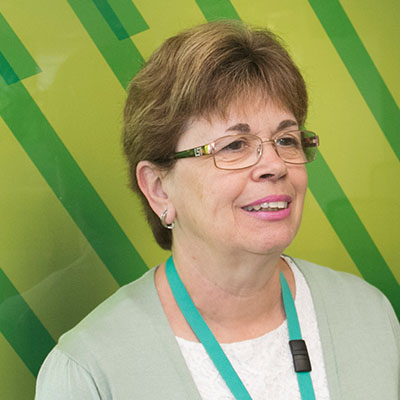SA Annual Report Summary 2015/16
Foreword from South Australia State Manager, Dr Richenda Webb
The best word to describe the actions of the SA office in 2015/16 is ‘collaboration’. Over the past year, we continued our focus on engaging with external stakeholders and introduced a number of initiatives to ensure public safety outcomes.
Highlights of 2015/16
- Greater communication of what’s required of registered health practitioners: The SA office delivered education sessions to practitioners and students about their obligations under the National Law.
- Improved processes: Regular weekly meetings of the Immediate Action Committee for the SA Boards ensured faster action on complaints.
- Efficient assessment of registrations: An influx of new applications for registration from Chinese medicine practitioners prompted by the end of the grandparenting agreement saw the SA office manage a larger than usual amount of applications.
Working in partnership with the National Boards
The SA office directly supports the work of the SA boards and committees of the Dental Board of Australia, the Nursing and Midwifery Board of Australia (NMBA), the Medical Board of Australia the Psychology Board of Australia and, indirectly, all other National Boards.
Of particular note was the introduction of a notification triage process with the standing Immediate Action Committee and the SA Board of the Nursing and Midwifery Board of Australia (see ‘Managing risks through local decision-making’ for more information).
I gratefully acknowledge the contribution of the members of the SA boards and committees to the health and safety of the South Australian community.
Building stakeholder relationships
Engaging with stakeholders took many forms for the SA office during the year. We had regular meetings with representatives from the office of the Health and Community Services Complaints Commissioner; the SA Chief Medical Officer; the SA Chief Nursing and Midwifery Officer; and the SA branches of the Australian Medical Association, the Australian Dental Association, the Australian Nursing and Midwifery Federation, Medical Insurance Group Australia and Avant Mutual Group (professional indemnity providers). These meetings encouraged discussion of issues of mutual interest in an informal and collegiate manner, including sharing information about emerging trends in notifications and potential public safety concerns.
Senior staff from the SA office delivered 25 education and training sessions on behalf of the National Boards to practitioners and students. Topics were tailored to the needs of each profession and included how to meet continuing professional development (CPD) requirements and maintain a CPD portfolio, what constitutes notifiable behaviour, and practitioners’ obligations under the National Law.
The annual Adelaide forum of the National Aboriginal and Torres Strait Islander Health Workers Association provided an opportunity to describe the importance and benefits of the National Scheme.
Managing risk through local decision-making
The mechanisms for managing risk are consistent in each state and territory under the National Scheme, and may include some or all of the following: immediate action; imposing restriction; accepting undertakings; suspension or cancellation of registration; ongoing compliance monitoring of practitioners; and/or audits.
Boards may also refuse or impose conditions on registration while making decisions on registration applications.
This year, we introduced a standing Immediate Action Committee for the SA Board of the Nursing and Midwifery Board of Australia. This was conceived to ensure timely action on new notifications that warrant immediate action, and follows the successful introduction of a standing Immediate Action Committee for the SA Board of the Medical Board of Australia in 2014/15.
Local office, national contribution
The end of grandparenting provisions for the Chinese medicine profession on 30 June 2015 had a significant impact on the SA office’s workload during 2015/16. The SA office is responsible for managing all registration applications from existing Chinese medicine practitioners under the grandparenting provisions of the National Law and from internationally qualified applicants.
Applications received towards the close of grandparenting amounted to about 20 times the volume usually processed, with most arriving in the final four weeks. They came from 580 individuals and contained approximately 1,100 separate applications under the three areas of practice: acupuncture, Chinese herbal medicine and Chinese herbal dispensing.
Capacity of the small registration team was increased and procedural improvements introduced to manage the influx of complex applications and to provide additional support to the Chinese Medicine Board of Australia during this busy transition period.
I’d like to thank the dedicated team in the SA office for their continued commitment to keeping the community in SA safe, and working hard to meet the objectives of the National Scheme.

Dr Richenda Webb
SA State Manager,
AHPRA